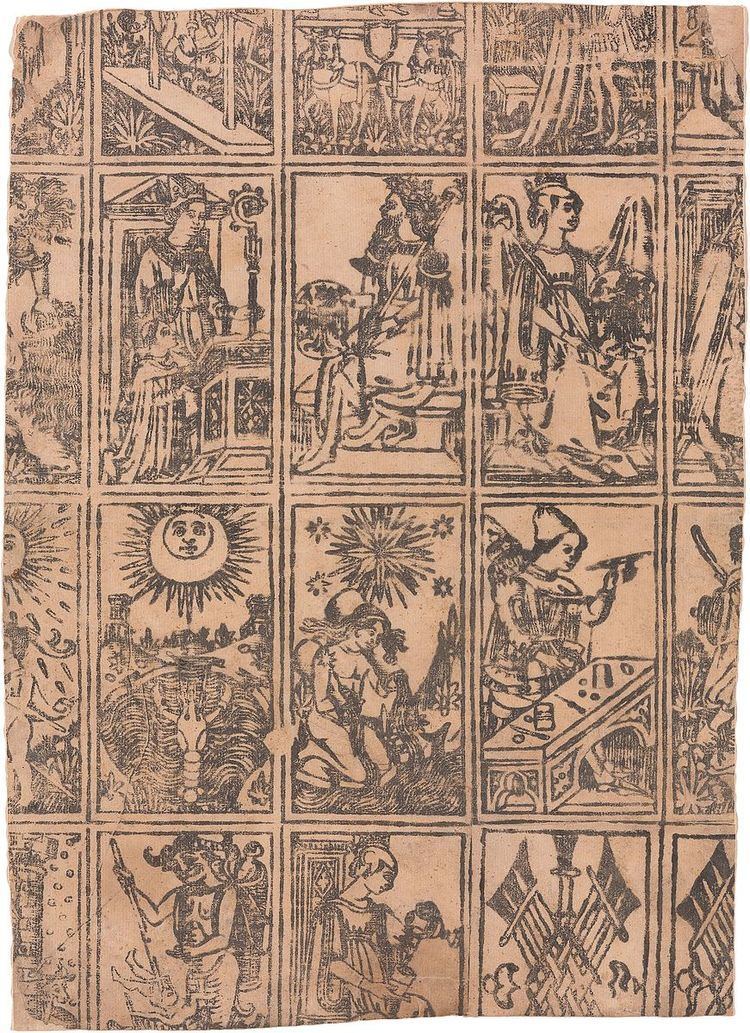 | ||
Trionfi ([triˈomfi], 'triumphs') are 15th-century Italian playing cards with allegorical content related to those used in tarocchi games.
Contents
History
Many of the motifs found in trionfi are found in trionfo, processions that were popular in the Italian Renaissance. The Palazzo Schifanoia in Ferrara, once owned by the ducal House of Este, contains many murals depicting these floats. Petrarch wrote a poem called Trionfi which may have served as inspiration.
The earliest known use of the name "Trionfi" in relation to cards can be dated to 16 September 1440 in the records of a Florentine notary, Giusto Giusti. He recorded a transaction where he transferred two expensive personalized decks to Sigismondo Pandolfo Malatesta.
A letter from November 1449 from the Venetian Antonio Jacopo Marcello used the expression for a deck that was produced 1425 or earlier. It was commissioned by the duke of Milan, Filippo Maria Visconti, painted by Michelino da Besozzo and described in an accompanying text by Martiano da Tortona. The deck itself is lost, but da Tortona's description offers details about the deck. It likely had a total of 60 cards (four kings, forty number cards and sixteen trumps). The forty four-suited cards used birds as suit signs and the trumps presented sixteen Roman gods.
Two decks from June 1457 seem to relate to a visit at Ferrara of the young Milanese heir of the dukedom Galeazzo Maria Sforza in July/August 1457. Each deck consisted of 70 cards — the modern Tarot deck typically has 78.
The first attestation of a deck with 78 cards was in a poem by Matteo Maria Boiardo written between 1461–1494. The deck was structured like modern tarots, but the motifs and suits signs of the Boiardo deck are totally different.
The earliest known appearance of the word "Tarochi" is in June 1505 in Ferrara. In December, "Taraux" decks are mentioned as being produced in the papal enclave of Avignon in France. Around this time, the word Trionfi seems to modify its character in a playing card context; it appears as a game of its own (Rabelais knows a Taraux and a Trionfi game) and seems no longer connected to the specific allegorical cards. This is most likely due to the popularity of Triomphe which usurped the old name. The general English expression "trump card" and the German "trumpfen" (in card games) have developed from the Italian "Trionfi".
Surviving decks
Expensive hand-painted, and usually gilded, decks custom-made for powerful clients have been preserved in greater numbers than mass-produced decks. More cards from the 15th and early 16th centuries have survived than those from the late 16th or 17th centuries.
Handcrafted
There are around 15 Visconti-Sforza tarot decks made for the rulers of Milan. These are the best preserved:
The following decks were made in Florence:
Decks with classical motifs:
